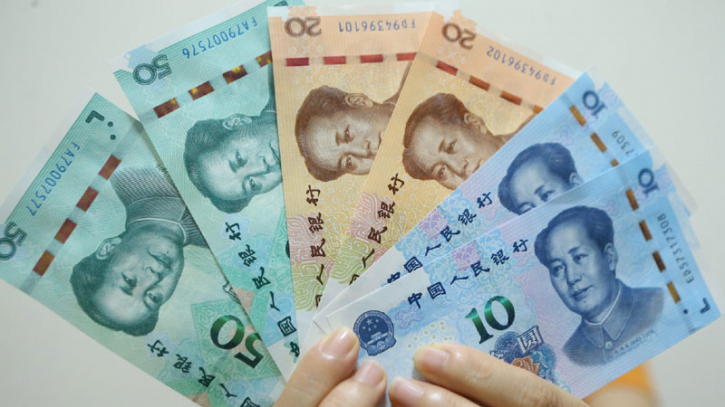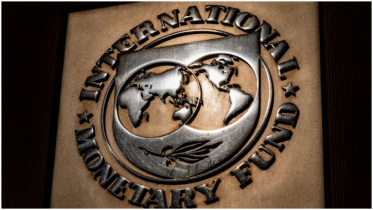Debates around De-dollarisation and Yuan Internationalisation

As the Chinese Yuan (CNY or Renminbi) is being adopted for more and more international payments, policy debates around de-dollarisation have heated up. Many countries like Russia, Brazil, and Argentina are increasingly exploring the use of the CNY. Beijing is now settling most of its international trade operations using the Chinese yuan. In March payments settled using the CNY overtook those made with US dollars, being used in 48.4% of all settlements, and usage of the USD for these payments fell from 48.6% to 46.7% during the same period.
Many politicians and analysts are questioning whether the dollar’s status as the world’s reserve currency can be maintained. The fact is that the economy of the United States has floundered for most of this century with growth rates far below historic averages, its public sector debt is ballooning as wasteful spending remains unchecked, and the US central bank is dangerously clueless about inflation. So as the dollar seems doomed, will the Yuan become the preferred international currency? Is de-dollarisation a realistic goal? Is it worth the trouble? If so, how can it be pursued?
Last month Chinese and French energy companies finalised the first-ever deal on liquified natural gas (LNG) in the Renminbi yuan currency. China and the Arab Gulf nations are working out a deal to use the Shanghai Petroleum and National Gas Exchange as a platform for carrying out yuan settlement of oil and gas trades. Recently in South Asia, Bangladesh and Russia have agreed to use Renminbi to settle payment for a nuclear plant being constructed by Russia’s state-owned atomic company Rosatom.
Although the Chinese CNY is at the forefront, the debates around de-dollarisation is neither altogether new nor completely driven by Beijing. For instance Bolivia, which was one of the most ‘dollarized’ countries in the world, with USD deposits exceeding 93% in mid-2000s, underwent one of the largest de-dollarisation efforts in the world. For too long the global trade has been denominated and financed in US dollars and a few other hard currencies. Now against an increasingly conflictual geopolitical background, and the economic war that the US has unleashed, many countries are considering agendas to achieve economic sovereignty in the future through de–dollarisation.
Russia is Forced to Turn to the Yuan:
Since the military operations in Ukraine the US and its Western allies banned Russia from accessing the Society for Worldwide Interbank Financial Telecommunications (SWIFT). Seeking alternatives to soften the impact of economic sanctions, Moscow has turned to China for an economic lifeline. Trade between the two hit a record of 190 billion dollars last year. Much of that payment was made in Chinese and Russian currencies. Both nations are decidedly trying to counterbalance the dominance of the dollar worldwide.
Even before the war in Ukraine the Russian Central Bank tried reducing the country’s dependence on western currencies. But the military campaign has further accelerated those efforts. In the third quarter of 2022 foreign currency in the Russian banking system fell to an all time low of 15% and for the first time this year the share of the dollar and the euro transactions on the Russian market has declined. Meanwhile the CNY overtook the US dollar as the most traded currency on the Moscow exchange last month. With a market share of nearly 40% of trading volume Russia and China are making efforts to get other countries to pay for trade in Yuan, since the visit of President Xi Jingping to Moscow in March. During the Russia-China summit, Putin expressed his positive opinion on the use of Chinese CNY in payments between Russia and countries of Asia, Africa, and Latin America.
Roadblocks for the CNY Internationalisation:
The US dollar has dominated global trade and capital flows for decades but its share in global Central Bank reserves has dropped to less than 60% from roughly 70, twenty years ago. The Euro share has gone up slightly since its launch more than two decades ago from 18% to just under 20%. While the CNY is being widely used it constitutes less than 3% of global currency reserves and China’s attempts to expand the currency’s international role has faced roadblocks. There are risks associated with trade in Yuan, especially bearing in mind China’s propensity to sudden devaluations.
There are still capital controls in China and how freely Russia can move Chinese CNYholdings into other currencies is also a challenge. In fact during his visit to Moscow the exchangeability so that it could denominate more of its trade with Africa in the currency and Beijing so far has just not responded to that request. China allows foreign central banks’ investments in renminbi to be liquidated and repatriated and inward investment in China cannot be easily reversed.Although the CNYhas become a major instrument of trade savings and credit financing in Russia, China still hasn’t offered Russia long term financing. So the credit market there is still really incredibly underdeveloped. Capital controls that are still in place on the Chinese CNY are a key challenge and until those remain the Chinese currency won’t be seen as an effective means of savings and deposits. While renminbi supplied under swap arrangements isn’t freely convertible into other currencies, USD financial markets, either onshore or in eurodollar markets, are deep and liquid.
And while it’s impressive that the Chinese CNY is now the most used currency for cross-border settlements, the fact is a single country—Russia, holds nearly a third of the world’s renminbi reserves. Russia was forced to turn to the CNY after the freezing of $300bn of its international assets and moves to exclude its main banks from global markets.
Domestically China is on the verge of becoming a cashless society. Millions of Chinese have downloaded the digital CNY app onto their phones. If you look at the volume of transactions being conducted using the digital Yuan, it is still very modest, only about 8 billion dollars compared to well over trillion in a half dollars on the Alipay platform. The vast majority of electronic transactions happen on privately owned apps, Alipay and WeChat Pay apps which are providing very easily accessible low cost digital payments to practically everybody in China. But the government is certainly determined to make sure that the digital CNY gets a lot of traction.
New Delhi ‘not comfortable’ with Yuan Settlements:
With wide ranging economic sanctions on Russia, India had to explore different routes to trade with Moscow. But India, which has border tensions with China, is “not comfortable” with Indian players settling foreign trade in Chinese currency amidst tense relations with Beijing. The currency concern came to limelight after India’s biggest cement producer UltraTech cement used Chinese CNY for a cargo of Russian coal last year. India and China have been locked in a lingering stand off since May 2020 along the line of actual control. New Delhi has asked banks and traders to use UAE dirhams instead of the Chinese Yuan.
Coordinated Strategy for Internationalisation of the CNY :
Beijing imposes strict capital controls, an anathema to global traders. CNY itself remains less convertible than the dollar or the euro. Global payments in CNY are under 3% and only 2.7% of Central Bank reserves of other countries are held in yuan. But China could take a great step forward if it figured out how to link CNY to gold. Gold backed currency was absolutely key to the US becoming a global financial power house. Over the past few years, both Russia and China, India and a number of other countries have been buying up huge amounts of gold, mainly to replenish the currency reserves of their Central Banks.
For now US financial markets are deeper, more sophisticated and more liquid than any others and the US dollar is vastly more trusted than the currency of the authoritarian Chinese regime. Most trade is denominated in dollars and most reserves in Central banks around the world are in dollars. The greenback is also the primary reserve asset for many international agencies. The dollar hegemony is likely to remain for some time, but the internationalisation of the CNY seems to be very coordinated and driven by the long term strategy of China.
A preliminary conclusion that can however be arrived at is that dollarisation can no longer be systematically seen as an inevitable phenomenon. China, Russia, and some Latin American countries have formulated comprehensive de-dollarisation policies and have managed, in varying degrees, to successfully attack the phenomenon. These countries are attacking the macroeconomic dimensions that influence dollarisation and are taking measures that directly affect the choice of a foreign currency as a means of payment or unit of account.
The case against de-Dollarisation is strengthened as it is positioned as a means to isolate the chaos caused by the United States, support countries affected by Washington’s influence, and expand cooperation in all possible directions. Some of the CNY denominated deals are being done to express this dissatisfaction with Washington. For instance Saudi Arabia is harbouring deep diplomatic grievances and concerns about blundering US foreign policy. US allies are forced to suffer huge economic losses as a result of sanctions against Russia, China and Iran. It remains to be seen how long Washington meets this situation with stubbornness providing incentives to other countries to develop a multipolar system.
Source: Modern Diplomacy
.png)




